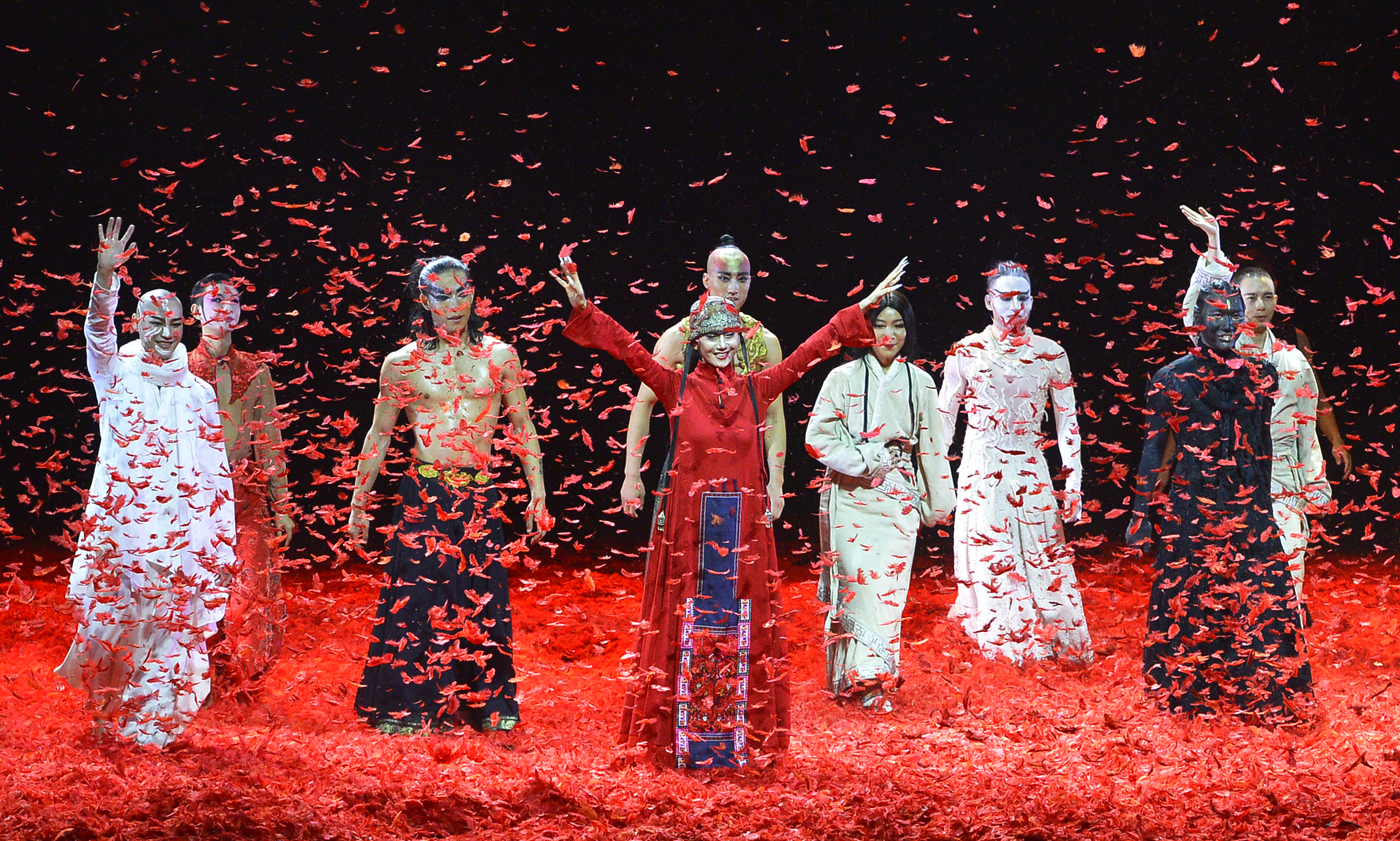03:17

It's a dialogue between East and West in the form of dance.
The latest version of Stravinsky's celebrated 1913 ballet, "The Rite of Spring," has stunned the audience with distinctive Chinese elements. Entwined together are philosophy, religion and aesthetics.
"I feel so proud that I can bring our cultural symbols and ethnic spirit to the international stage and make them felt and understood by the audience," Yang Liping, choreographer of the play, told CGTN.

Yang Liping talks in an interview with CGTN. /CGTN Photo
Yang Liping talks in an interview with CGTN. /CGTN Photo
During the show, Yang combined a piece of music created by Chinese musician He Xuntian with the original classic work by Stravinsky in an attempt to present a more complete story. She also integrated a few elements from Tibetan Buddhism.
"As a choreographer from China, what I aim to achieve is to bridge the East and West in a distinctive way while avoiding any disharmony. Simply speaking, just very Chinese style," Yang added. She called this work an "experiment" and a "crossover."
Born in 1958 in Dali, southwest China's Yunnan Province, Yang is a household name in China. She started her dancing career at the age of 13, as she said, out of gift and passion, and went all the way to one of the country's top art troupes – China Ethnic Song and Dance Ensemble.
"I'm from the Bai ethnic group. I have been obsessed with our culture since childhood. We drum to pray for more offspring, we sing to celebrate good harvests, and we dance to appreciate the warmth from the sun… everything is related to nature, to life," said the renowned artist.
For a long time, Yang was known as "the peacock princess" for her classic peacock dances, a traditional art form of China's Dai ethnic minority. But her creations go far beyond this. Over her career that has spanned nearly half a century, she has integrated diverse elements from Yunnan's over 20 ethnic minority groups into her shows.

"The Dynamic Yunnan," an iconic work created by Yang Liping, is shown in Tianjin, north China. /VCG Photo
"The Dynamic Yunnan," an iconic work created by Yang Liping, is shown in Tianjin, north China. /VCG Photo
A prime example is her masterpiece "Dynamic Yunnan," a grand primitive song and dance medley that demonstrates the diverse art forms and costumes of different ethnic groups. The performance, which debuted in 2003, is still performed every day in Kunming, Yunnan's provincial capital.
"When I came back from Beijing following retirement, I felt very anxious after seeing that many valuable and classic things were disappearing," Yang recalled. "Many things are non-renewable. We can't get them back once we lose them. I think as dancers, we should try to show what we have instead of simply imitating the exotic."
She started to collect traditional art elements from different ethnic groups, especially the endangered ones, and reproduce them.
"I am a guardian of these traditions, maybe the last one, and I believe it's worth it!"
Yang has gradually moved backstage. But her passion for the art form still burns. As a choreographer, she keeps experimenting and innovating, helping more young performers take center stage – a way to pass on and revitalize the ethnic culture.
"As a member of the older generation, it's my job to give the young talent guidance, opportunities and platforms, and try to inspire them to create more good work and show the audience their best," said the 61-year-old artist.

Yang Liping and performers of the dance drama "Under Siege" on stage. /VCG Photo
Yang Liping and performers of the dance drama "Under Siege" on stage. /VCG Photo
Yang said she will keep learning, experimenting and creating. Dali is always a sacred place in her heart, so she is determined to present the history, beauty and mystery of her hometown to the world via a special work expected in the years to come.
Yang said every human has to face the reality of aging, but the charm and vitality of good works are eternal.
(Video cover :Yang Liping performs in the "Winter of Peacock," a work created in 2016. /VCG Photo)